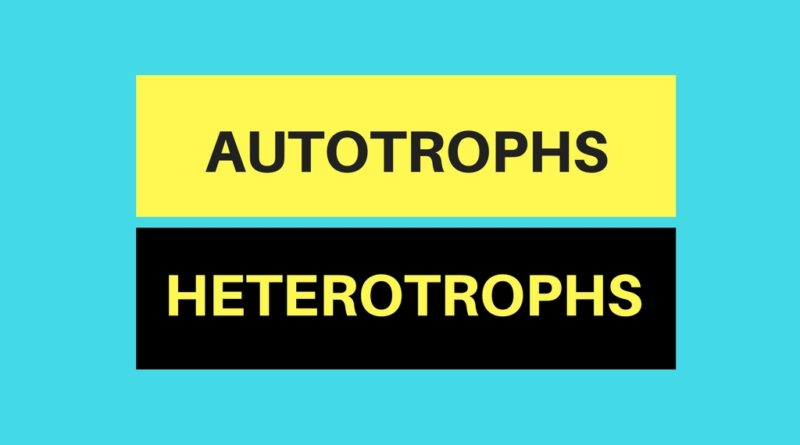What is the difference between autotrophs and heterotrophs?
Nutrition is the biological process where a living organism acquires food. Nutrition is classified into autotrophic and heterotrophic nutrition.
The core difference between autotrophs and heterotrophs is that autotrophs are organisms that make their food while heterotrophs are organisms that cannot synthesize their food.

What Are Autotrophs?
Autotrophs are an organism that can synthesize their food. They synthesize their food through the process of photosynthesis where water, light, and carbon IV oxide are vital factors.
Autotrophs are producers and they are at the primary level of the food web or food chain. They are green plants with chlorophyll that trap light from the sun to manufacture their food.
Examples of food synthesized by autotrophs are sucrose, starches, cellulose, carbohydrates, lipids, and proteins. The food provides energy for autotrophs.
What are Heterotrophs?
Heterotrophs are an organism that cannot manufacture their food. These organisms depend on autotrophs for food.
These organisms are primary, secondary, and tertiary consumers from the food web or food chain. All non-green plants and animals belong to heterotrophs.
Comparison Table: Autotrophs Vs Heterotrophs
| Basic Terms | Autotrophs | Heterotrophs |
| Meaning | Organisms that synthesize their food through photosynthesis | Organisms that cannot synthesize their food |
| Food Web or Food Chain | Producers | Primary, Secondary and Tertiary Consumers |
| Examples | All green plants, algae, and some bacteria | All animals and non-green plants |
| Main Components | Chloroplast | Lack chloroplast |
| Types | Photoautotroph and Chemoautotroph | Photoheterotroph and Chemoheterotroph |
| Energy Source | From food synthesize during photosynthesis | From food obtain from autotrophs |
| Hierarchy level | Primary producers form the food chain | Depend on autotrophs as secondary or tertiary consumers |
| Dependence | Independent organism | Rely on another organism for food |
| Energy storage | Store sunlight and chemical energy | Cannot store energy |
| Role | Act as producer | Act as consumers |
| Movement | Cannot move from one place to another | Can move from one place to another |
| Digestive System | Lack of digestive system | Have a digestive system |
Core Difference between Autotrophs and Heterotrophs with Example
- Autotrophs make their food while heterotrophs cannot make their food
- Autotrophs act as producers while heterotrophs act as secondary or tertiary consumers
- Heterotrophs move from one point to another while autotrophs do not move from one place to another
- Heterotrophs have a complete digestive system while autotrophs lack a digestive system
- Autotrophs have chloroplast while heterotrophs lack chloroplast
- Autotrophs can store sunlight and chemical energy while heterotrophs cannot store energy
- Autotrophs are independent organisms while heterotrophs depend on other organisms for food
- Heterotrophs are grouped as Photoheterotroph and Chemoheterotroph while autotrophs are grouped as Photoautotroph and Chemoautotroph
- Examples of autotrophs are all green plants, algae, and some bacteria while heterotrophs examples are all animals and non-green plants
- Autotrophs require sunlight, water, and carbon dioxide to make their food while heterotrophs do not require anything to obtain food.
Similarities between Autotrophs and Heterotrophs
- Both help to maintain the flow of energy in the ecosystem
- Both are the classification of nutrition
- Both show the relationship between organisms
You May Also Like:
- Difference between Plants and Trees
- Difference between Chlorophyll and Chloroplast
- Difference between Cellular Respiration and Photosynthesis
Comparison Video
Summary
The main difference between autotrophs and heterotrophs in point form is that autotrophs make their food while heterotrophs cannot make their food. The two-mode of nutrition provides insights into producers, primary consumers, secondary consumers, and tertiary consumers.